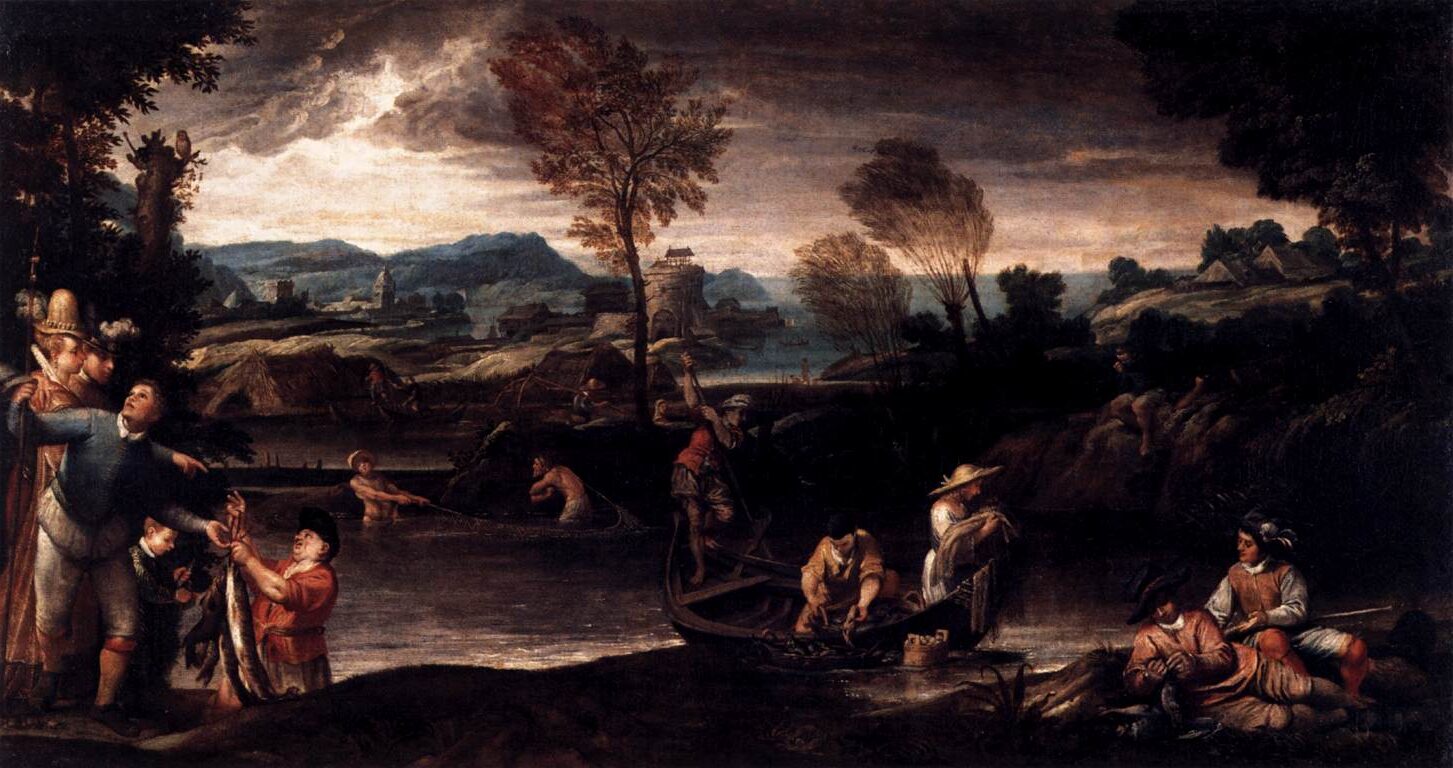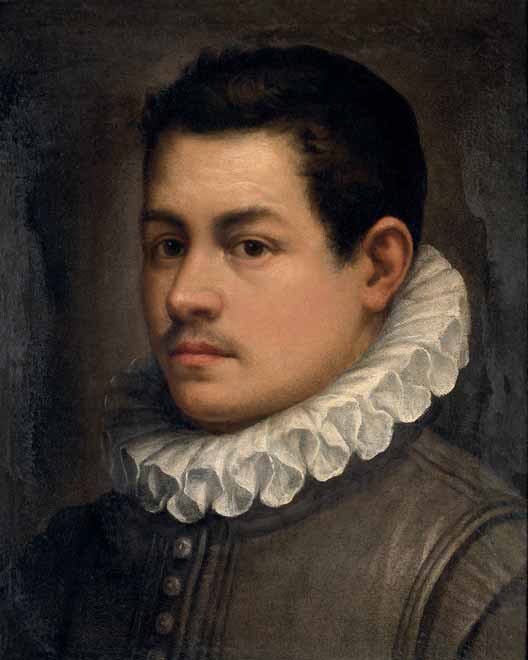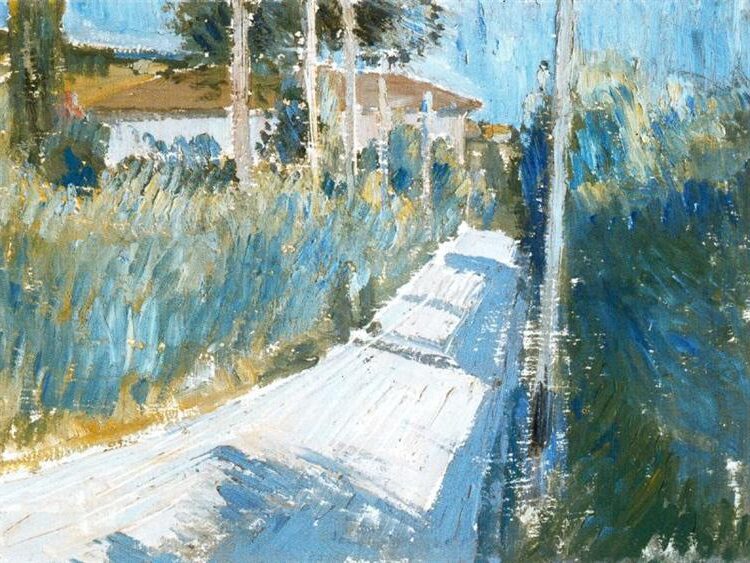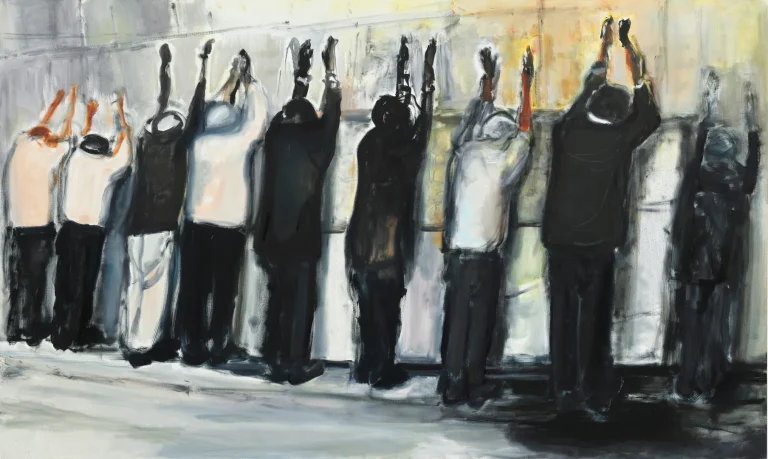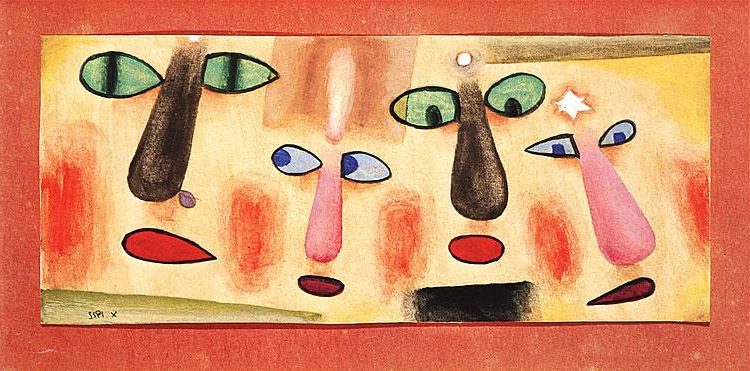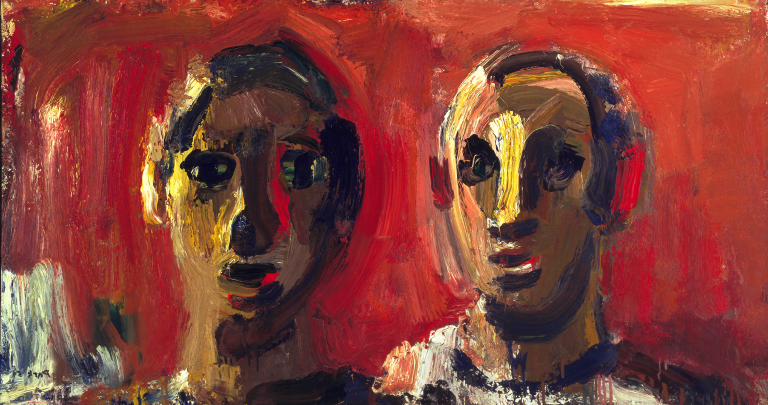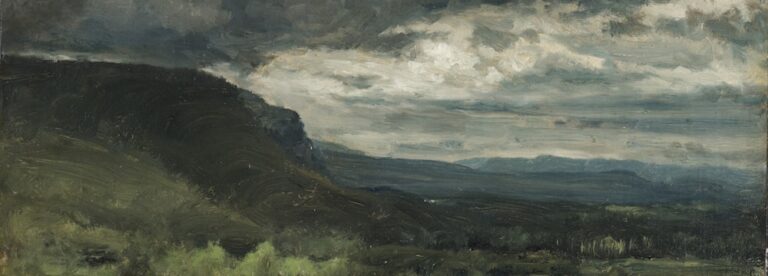Annibale Carracci Painter: The Baroque Master Who Revolutionized Italian Art
Born: November 3, 1560, Bologna, Papal States
Death: July 15, 1609, Rome, Papal States
Mouvement artistique : Baroque
Nationalité : Italien
Institution: Academy of the Desiderosi
Annibale Carracci Painter: The Baroque Master Who Revolutionized Italian Art
Début de la vie et influences
Annibale Carracci was one of Italy’s most influential painters during the late Renaissance. His formative years in Bologna shaped his artistic vision, while his role in founding the Academy of the Incamminati revolutionized art education.
Formative Years in Bologna
Born in Bologna in 1560 to a family originally from Cremona, Annibale Carracci grew up in an environment that nurtured his artistic talents. His early training came from family members. His cousin Ludovico taught him painting techniques, while he learned printmaking from his brother Agostino.

Sleeping Venus (1602–1603) by Annibale Carracci
Bologna’s artistic atmosphere deeply influenced young Annibale. The city stood at a crossroads of various Italian artistic traditions, exposing him to diverse styles. Unlike many artists of his time, Annibale didn’t receive formal academic training.
Instead, he studied the works of northern Italian masters directly. He particularly admired Correggio’s use of light and color. Annibale also traveled to Venice and Parma, where he absorbed the techniques of Titian and Veronese.
Founding the Academy of the Incamminati
Around 1582, Annibale joined forces with his brother Agostino and cousin Ludovico to establish the Academy of the Incamminati (“those who are making progress”). This innovative school rejected the artificial mannerism popular at the time.
The academy promoted a return to direct observation of nature. Students learned to draw from live models rather than copying existing artworks—a revolutionary approach in 16th century art education.
Annibale and his relatives taught students to study the great masters like Michelangelo and Raphael while maintaining their individual styles. This balanced approach produced a new generation of artists who combined technical skill with naturalism.
The academy quickly gained recognition throughout Italy. Its teaching methods influenced art education for centuries to come and helped establish Bologna as an important center for Italian art during this period.
Style artistique et contributions

Butcher’s Shop (1580) by Annibale Carracci
Annibale Carracci revolutionized Italian art through his unique blend of naturalism and classical idealism. His technical mastery and innovative approaches created the foundation for Baroque painting while maintaining strong connections to Renaissance traditions.
Innovations dans le domaine de la peinture
Annibale Carracci developed a distinctive style that combined northern Italian naturalism with the classical idealism of Roman painting. This powerful fusion became the cornerstone of the Baroque movement, positioning him as one of its founding fathers.
His masterpiece, the ceiling frescoes of “The Loves of the Gods” in the Farnese Palace, showcased his remarkable ability to blend vibrant colors with dramatic lighting effects. These works demonstrated his technical virtuosity and deep understanding of perspective.
Unlike his contemporaries, Carracci studied directly from nature rather than simply copying earlier masters. However, he clearly respected Renaissance giants like Raphael and Michelangelo, whose influences appear throughout his compositions.
His bold brushwork and rich color palette created a sense of dynamism that distinguished his work from the Mannerist style prevalent during his early career.
Genre Painting and Naturalism
Carracci pioneered genre painting in Italy, creating scenes of everyday life with unprecedented realism and emotional depth. His “Bean Eater” exemplifies this approach, depicting a common laborer eating with simple dignity.

The Samaritan Woman at the Well (1550) by Annibale Carracci
His commitment to naturalism extended beyond subject matter to technique. Carracci insisted on drawing from life, establishing academies that taught students to observe reality directly rather than copying stylized forms.
Carracci is credited with inventing caricature as an art form, revealing his keen observation skills and less formal side. These humorous, exaggerated portraits demonstrated his ability to capture essential character traits.
His landscapes incorporated carefully observed natural elements alongside classical compositions, creating a new standard for depicting the natural world in Italian art.
Influence sur les générations futures
Carracci’s teaching methods and artistic innovations influenced generations of European painters. The Carracci Academy he founded with family members established principles that shaped art education for centuries.
His balance between idealism and naturalism provided a template that later Baroque masters like Caravaggio and Rubens would build upon. These artists took his innovations in different directions but acknowledged his foundational role.
The ceiling of the Farnese Palace became a must-study work for serious artists visiting Rome. Its complex narrative programs and technical achievements served as a model for grand decorative schemes throughout Europe.
His drawings and prints circulated widely, extending his influence beyond those who could see his paintings. These works demonstrated his exceptional draftsmanship and compositional skills.
Œuvres notables et héritage
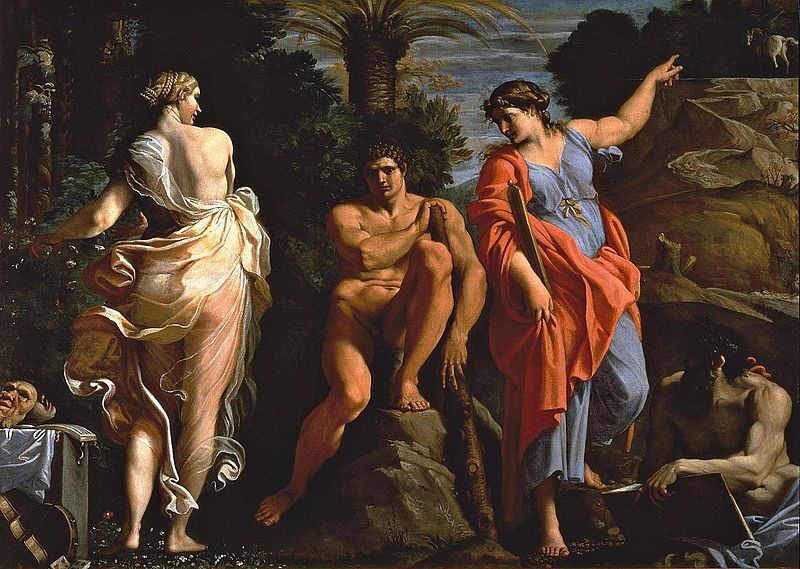
The Judgment of Hercules (1596) by Annibale Carracci
Annibale Carracci produced masterpieces that revolutionized Italian painting at the turn of the 17th century. His innovative style blended naturalism with classical ideals, creating works that influenced generations of artists across Europe.
Major Commissions in Rome
Annibale’s move to Rome in 1595 marked a pivotal moment in his career. His most significant achievement was the ceiling fresco cycle at Palazzo Farnese, completed between 1597 and 1600. The Loves of the Gods showcased his mastery of perspective, color, and composition.
Prior to Rome, Annibale worked with his brother and cousin on decorations for Palazzo Fava in Bologna. These early collaborative works demonstrated his developing style.
Religious subjects were equally important in his oeuvre. The Assumption and Resurrection of Christ revealed his ability to convey spiritual drama through dynamic compositions and emotional expressiveness.
His Flight to Egypt paintings, created in various versions, displayed his innovative approach to landscape painting, merging natural observation with ideal beauty.
Lasting Impact on Italian Art
Annibale Carracci’s work bridged Mannerism and the Baroque, establishing a new direction for Italian painting. He rejected the artificial complexity of late Mannerism in favor of clarity and emotional depth.

The Silent Madonna with Saint John the Baptist (1500)
The Bolognese artist founded an influential academy with his brother and cousin. Their teaching emphasized drawing from life, anatomical correctness, and study of masters like Raphael.
His approach to Madonna paintings revitalized religious art with greater naturalism while maintaining devotional dignity. This balance between idealism and realism became a hallmark of 17th-century Italian painting.
Annibale’s landscapes were revolutionary. He elevated the genre beyond mere background to become meaningful subjects in their own right.
Preservation and Display in Galleries
Today, Annibale’s works are preserved in prestigious museums worldwide. The Uffizi Gallery in Florence holds significant examples of his religious and mythological paintings.

Pietà (1603) by Annibale Carracci
The National Gallery of Art in Washington houses several important works, including one version of his innovative “Bean Eater” genre scene, showing ordinary people at mealtime.
Major collections in Paris, particularly the Louvre, display his masterful paintings to international audiences. His drawings are especially prized for their spontaneity and technical brilliance.
Conservation efforts have restored many of his frescoes. The Palazzo Farnese ceiling underwent extensive cleaning in recent decades, revealing the original vibrant colors and details of Annibale’s masterpiece.
Museums typically display his works alongside contemporaries to show his pivotal role in art history’s development from Renaissance to Baroque.
Questions fréquemment posées
Annibale Carracci’s work transformed Italian painting and helped establish the Baroque style. His technical innovations and classical approach created a new direction that influenced generations of artists across Europe.
What are the notable contributions of Annibale Carracci to the Baroque art movement?
Annibale Carracci helped recover the classicizing tradition of the High Renaissance when many artists were practicing Mannerism. His work in the Farnese Palace in Rome is considered a cornerstone of Baroque ceiling decoration.
He developed a more naturalistic approach to painting that balanced idealism with observation from life. This approach became fundamental to Baroque art.
Carracci established an influential academy in Bologna that taught students to draw from life rather than simply copy other artists’ work. This educational approach revolutionized artist training.
Can you describe some of the prominent themes in Annibale Carracci’s artwork?
Classical mythology features prominently in Carracci’s work, especially in his Farnese Gallery frescoes. These scenes blend idealized forms with emotional expressiveness.
Religious subjects make up a significant portion of his output, with his altarpieces showing a renewed attention to clarity and devotional impact.
Landscape was another important theme for Carracci, who pioneered the classical landscape genre with idealized pastoral scenes that influenced artists for centuries.
Who were Annibale Carracci’s primary influencers in his approach to painting?
Correggio’s graceful figures and dramatic ceiling compositions influenced Carracci’s approach to space and form. This influence is particularly visible in his ceiling decorations.
Raphael’s balanced compositions and idealized figures provided a classical foundation that Carracci built upon. He studied Raphael’s works extensively during his time in Rome.
Venetian artists, particularly Titian, influenced Carracci’s rich color palette and painterly technique. He combined this with Central Italian drawing precision.
How did Annibale Carracci’s techniques differ from his contemporaries?
Unlike the Mannerists who dominated when Carracci began working, he returned to direct observation of nature. His drawings often show careful studies from life rather than stylized distortions.
Carracci developed a balanced approach that combined idealization with naturalism. This contrasted with both the extreme artificiality of late Mannerism and the intense realism of Caravaggio.
His brushwork was more varied and responsive to different textures than many contemporaries. He could shift from smooth painting to more visible brushstrokes as the subject required.
What impact did Annibale Carracci have on the development of landscape painting?
Carracci established the classical landscape as a significant genre in Western art. His idealized scenes with classical buildings and mythological figures created a template followed for centuries.
He elevated landscape from merely decorative backgrounds to subjects worthy of serious artistic attention. This shift in status helped landscape painting become an independent genre.
His landscape drawings from life showed remarkable sensitivity to natural forms and atmospheric effects. These works influenced the development of plein-air painting traditions.
Which of Annibale Carracci’s works is considered his masterpiece?
The Farnese Gallery ceiling in Rome (1597-1601) is widely regarded as Annibale Carracci’s greatest achievement. This monumental fresco cycle depicts the loves of the gods in a groundbreaking illusionistic framework.
The ceiling combines architectural illusion, mythological narrative, and virtuoso figure painting. Its harmonious integration of these elements established a new standard for decorative painting.
Art historians particularly value how the Farnese ceiling revitalized classical ideals while incorporating dynamic Baroque elements. This balance influenced generations of painters throughout Europe.

